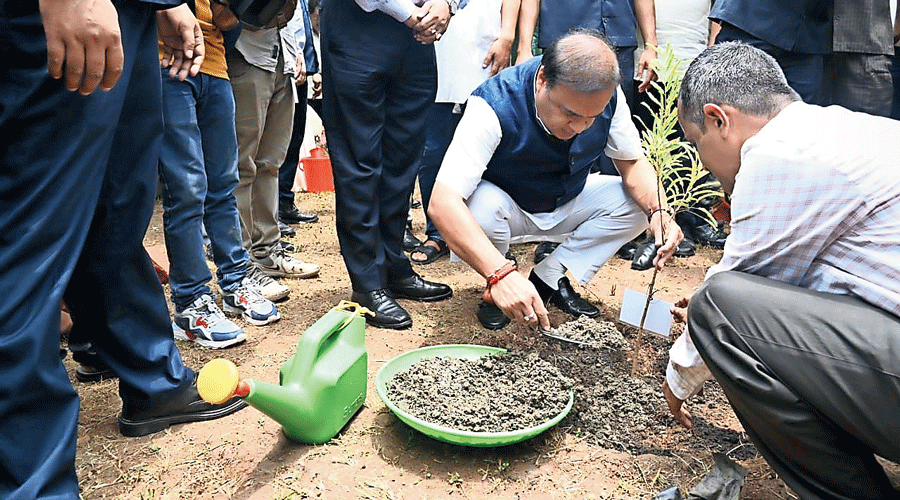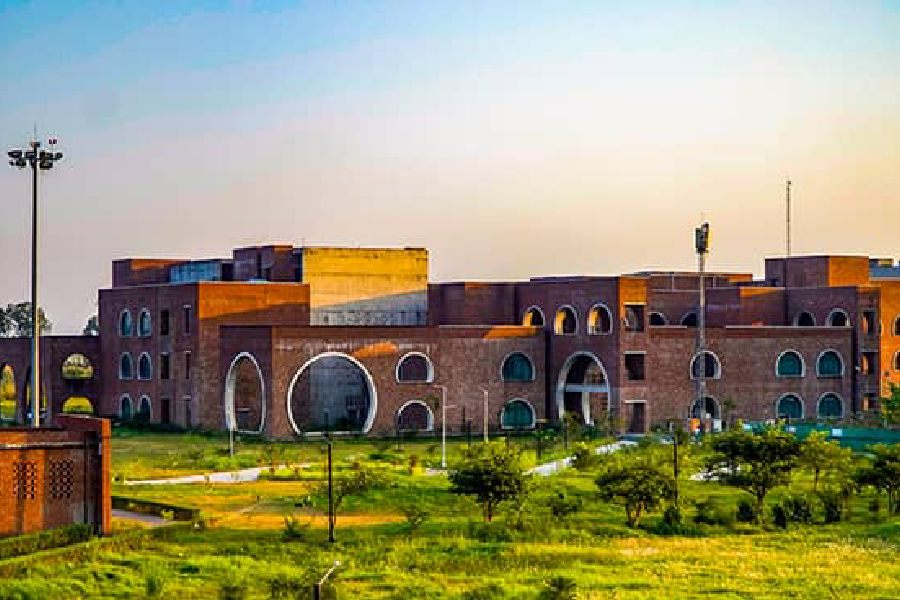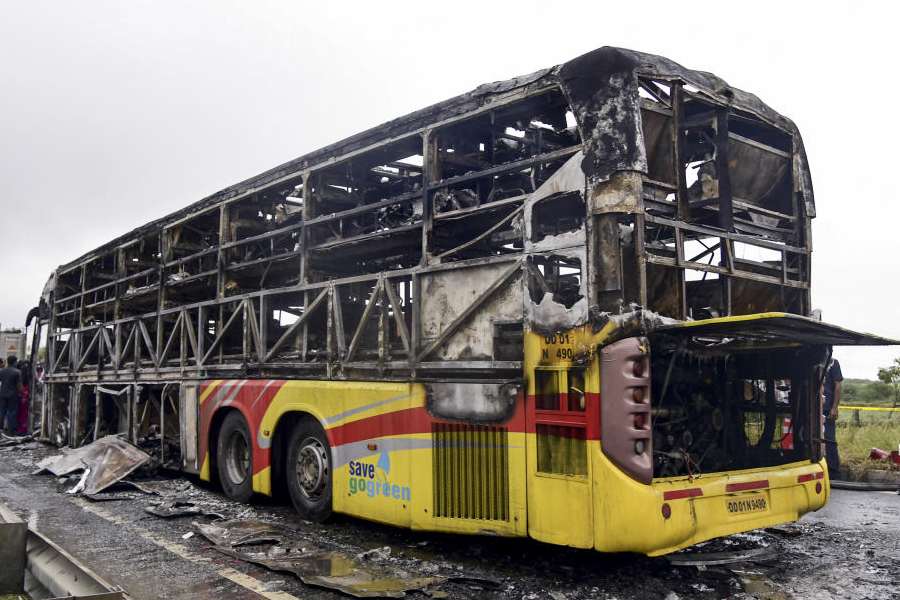Assam chief minister Himanta Biswa Sarma on Sunday used the launch of a state-wide plantation drive covering 80,000 government institutions to nudge the state forest department to start a “movement to restore” the state’s forest cover to minimise the devastation caused by flood every year.
The trigger for Sarma’s request to the forest department has been the unprecedented damage caused to life and livelihood by the two waves of flood this year.
Altogether 195 people and 54,000 cattle have died in the flood and over three lakh houses, 5,564 roads and 42 embankments damaged. Overall it has left one-third of the state’s 3.2 crore population and 34 of the 35 affected between April 6 to July 15.
Sarma made the call at the launch of the Chief Minister’s Institutional Plantation Programme (CMIPP) at the Janata Bhavan here, exhorting the forest department to play a “larger role” in reclaiming forests through plantation and clearing encroachment.
An initiative of the state science, technology and climate change department, the CMIPP will run from July 17 to August 15, covering institutional campuses such as schools, colleges, hospitals and police stations under the state government.
The initiative envisages conservation of native plant species, aesthetic beautification of the institutional premises and collective participation for climate action.
“I urge all institutions to plant 75 saplings (Amrit Briksha) coinciding with #AzadiKaAmritMahotsav &transform CMIPP into Amrit Briksha Mahotsav. Under CMIPP, native saplings will be planted, geotagged &uploaded on web portal followed by proper care & monitoring for next 3 years,” Sarma later tweeted.
Asserting there has been massive degradation of forest in both the hills and the plains. If there is no forest, 100 per cent rain water rolls down the hills causing massive flood downstream.
“Had there been adequate forest cover only 70 per cent of rain water would have flown down the hills and mountains while the rest absorbed by the trees which is not the case now.… There has been massive degradation in Lumding and in BTAD areas, among others, a cause for the massive flood we witnessed this year. We need to look at these factors or we will have to spent our time assessing fully and partially damaged houses every year,” Sarma said.
The recorded forest area of Assam is 26,832 sqkm, accounting for 34.21 per cent of its geographical area. According to the latest India State of Forests Report (ISFR) 2021, released by the Ministry of Environment, Assam lost 15 sqkm of forest during 2019-2021.
On the other hand, Arunachal Pradesh lost the maximum forest cover (257 sqkm) during the same period followed by Meghalaya 249 sqkm, Nagaland 235 sqkm, Mizoram 186 sqkm, Meghalaya 73 sqkm, Tripura four sqkm and Sikkim one sqkm.
Urging the forest department to start a “movement to restore our forests” and to secure the future of Assam from flood, Sarma said, “We need to maintain our forest cover. One has to remember that if you lose forest, you will have flood. Flood is not taking place because of power projects in Bhutan and Kopili as a section wants to suggest. It has happened in Guwahati where there is no power project.”
He added: “It (flood) is happening because we are losing our forest cover. Had we protected out forest, there would not have been Nabin Nagar (a locality in Guwahati prone to water-logging). We have to look at the core issues and find solutions.”
Assam this year received very heavy rainfall, around 1,891.9mm between March 1 and June 24, which is only 347.5mm short than the annual average. Moreover, the spells were brief and intense, leaving the affected very little time to react.
The chief minister subtly expressed his displeasure at the forest department for not going for drone survey to monitor the health of the forests and submit a report every three months or six months as suggested by him last year.
Apart from going for massive and earnest afforestation to reclaim lost forest cover, Sarma also urged the department to “prepare” modalities for “shifting” genuine landless settlers from forest to non-forest areas and “adopt zero tolerance towards recent encroachment”.
Sarma also called for bi-annual drone survey of forests and compare the data with previous survey to ascertain the loss or gain in forest cover apart from ensuring survival of saplings planted on various occasions.
He also exhorted forest officials to learn from their counterparts elsewhere in the country and encourage the setting up of nurseries.
“We can encourage those living in forest to plant trees and also make nursery business commercially more profitable. Transplanting trees is a good business. We can export plants/trees to other places. Check what is happening in Hyderabad…” he said.
He also pointed out that the department was “mostly” focussing on the Kaziranga National Park, known for its one-horned rhinos. “We also need to focus on Manas, Orang and Raimona,” Sarma said.
Assam has seven national parks.










